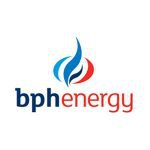BPH highlights prospectivity of PEP 11
Hey! Looks like you have stumbled on the section of our website where we have archived articles from our old business model.
In 2019 the original founding team returned to run Next Investors, we changed our business model to only write about stocks we carefully research and are invested in for the long term.
The below articles were written under our previous business model. We have kept these articles online here for your reference.
Our new mission is to build a high performing ASX micro cap investment portfolio and share our research, analysis and investment strategy with our readers.
Click Here to View Latest Articles
Diversified investment group, BPH Energy (ASX:BPH) has provided an update on an active petroleum system (PEP 11) in which it has an interest through an associate company.
For the best part, this incorporates historical data and information regarding other active plays which could have geological associations with PEP 11.
The release of this information is timely given that authorisation regarding drilling of the target could be forthcoming in the near term.
A decision by National Offshore Petroleum Titles Administrator (NOPTA) that would enable drilling of the Baleen target is pending.
As a backdrop, BPH associate company Advent Energy investee Advent Energy Ltd, has submitted the application to enable the drilling of the Baleen drill target.
BPH has an interest of 22.7% in Advent Energy.
Advent, through wholly-owned subsidiary Asset Energy Pty Ltd, holds an 85% interest and is operator of the permit, while Bounty Oil and Gas NL (ASX: BUY) holds the remaining 15%.

Oil and gas potential
BPH has cited information from studies conducted by prior tenement holders, Santos and Ampolex with the former reporting that the offshore Sydney Basin was prospective for gas and that 10 structural leads were identified in four structural provinces with a total potential gas in place of 1 TCF.
While the geological and geophysical interpretations are based on seismic survey conducted nearly 40 years ago, management sees them as still being relevant in terms of assessing the area’s prospectivity.
The PEP 11 area extends across most of the shallow (less than 200 metres) offshore Sydney Basin covering more than 4500 square kilometres.
Though the Basin is considered gas-prone, management said that numerous significant petroleum shows have been reported, supporting its assessment that there is an active petroleum system.
Santos (1991) identified a total of ten structural lead in the PEP 11 offshore area and these were associated with four distinct structural provinces.
Two leads were associated with the flanks of the Newcastle Syncline, and four were viewed to be associated with the central high.
Three leads were identified as being associated with fault and dip closures on the southeastern flank of the volcanic pile and one lead was identified on an easterly trending structural nose, south of the volcanic pile.
Management sees associations with systems in Queensland and New South Wales
Management said that an active hydrocarbon system has been demonstrated that is analogous to major discoveries in Queensland’s Surat/Bowen Basin.
The company also referred to Sydney Basin systems, noting that offshore oil and gas seeps have been recorded from Long Reef to Catherine Hill Bay, giving rise to periodic oil slick occurrences along the coast, especially in the Cape Three Points, Terrigal area, perhaps supporting its view that the Basin contains an active petroleum system.
The Early Permian with a stronger marine influence is considered to have the better reservoir potential, and there is a view that reservoir potential should increase to the east, in the offshore, where palaeo-depositional environments had greater marine influence.
PEP 11 represents a unique opportunity to explore a frontier Permo-Triassic basin complex containing mature source rocks and active petroleum systems adjacent to Australia’s most strategic gas market.
Making further references to fields in a similar area, BPH noted that ESP Exploration (1982) reported that of the 68 wells drilled in the onshore Sydney Basin since 1910 almost all had gas flows with 41% flowing gas on test, mostly from the Triassic Narrabeen Formation.
Further seismic exploration was conducted in the PEP11 permit area in 1991, 2004, and 2017, and all early seismic data that was acquired in PEP11 has been reprocessed.
A report completed by Pangean Resources in 2010 following a review of prior seismic concluded, “Undiscovered gross prospective recoverable gas resources for structural targets within the PEP11 offshore permit have been estimated at 5.7 Tcf (at the Best Estimate level).’’
Right time, right place
If PEP 11 does emerge as a commercial discovery it would certainly be good timing with the supply-demand situation on the east coast of Australia likely to support robust gas prices in the medium-term.
On this note, Australia Advent has identified a new target at Baleen.
A high resolution 2D seismic survey has been conducted to assist in establishing a drill target at Baleen, approximately 30 kilometres south of Newcastle.
PEP 11 is immediately adjacent to the largest domestic gas market in Australia and is a high impact exploration project that remains one of the most significant untested gas plays in Australia.
Successful exploration and identification of a commercial well that can be developed would be a significant lift for the joint venture partners, particularly at a time when supply is diminishing and demand is growing.
Management said that the gas supply crisis on the east coast of Australia has created a significant market opportunity to raise the funding to drill with the objective of developing the PEP11 project.
The Australian Competition and Consumer Commission (ACCC) released a report in January 2020 with the key points being uncertainty in supply in the southern states and steady-state pricing in the East Coast Gas Market.
In its latest Gas Statement of Opportunities (GSOO), the Australian Energy Market Operator (AEMO) has warned about potential supply shortages emerging on the east coast within five years, particularly in the southern states.
A report released by GSOO for 2020 pointed to supply from existing and committed gas developments being sufficient to meet forecast gas demand across eastern and south-eastern Australia until at least 2023, provided that liquefied natural gas (LNG) export spot cargoes are redirected to meet domestic demand if required.
The report also noted that southern supply from existing and committed gas developments will reduce by more than 35% (163 petajoules [PJ]) over the next five years, despite an increase in committed gas developments in the past year.
This projected timing of reduced supply (five years) would be at the forefront of BPH’s thinking, as it takes some time and financial support to move from authorisation to drill, to establishing an exploration program, making a discovery, confirming commercial viability, obtaining funding, constructing infrastructure and delivering oil and gas from an offshore project to onshore users.
General Information Only
S3 Consortium Pty Ltd (S3, ‘we’, ‘us’, ‘our’) (CAR No. 433913) is a corporate authorised representative of LeMessurier Securities Pty Ltd (AFSL No. 296877). The information contained in this article is general information and is for informational purposes only. Any advice is general advice only. Any advice contained in this article does not constitute personal advice and S3 has not taken into consideration your personal objectives, financial situation or needs. Please seek your own independent professional advice before making any financial investment decision. Those persons acting upon information contained in this article do so entirely at their own risk.
Conflicts of Interest Notice
S3 and its associated entities may hold investments in companies featured in its articles, including through being paid in the securities of the companies we provide commentary on. We disclose the securities held in relation to a particular company that we provide commentary on. Refer to our Disclosure Policy for information on our self-imposed trading blackouts, hold conditions and de-risking (sell conditions) which seek to mitigate against any potential conflicts of interest.
Publication Notice and Disclaimer
The information contained in this article is current as at the publication date. At the time of publishing, the information contained in this article is based on sources which are available in the public domain that we consider to be reliable, and our own analysis of those sources. The views of the author may not reflect the views of the AFSL holder. Any decision by you to purchase securities in the companies featured in this article should be done so after you have sought your own independent professional advice regarding this information and made your own inquiries as to the validity of any information in this article.
Any forward-looking statements contained in this article are not guarantees or predictions of future performance, and involve known and unknown risks, uncertainties and other factors, many of which are beyond our control, and which may cause actual results or performance of companies featured to differ materially from those expressed in the statements contained in this article. S3 cannot and does not give any assurance that the results or performance expressed or implied by any forward-looking statements contained in this article will actually occur and readers are cautioned not to put undue reliance on forward-looking statements.
This article may include references to our past investing performance. Past performance is not a reliable indicator of our future investing performance.





